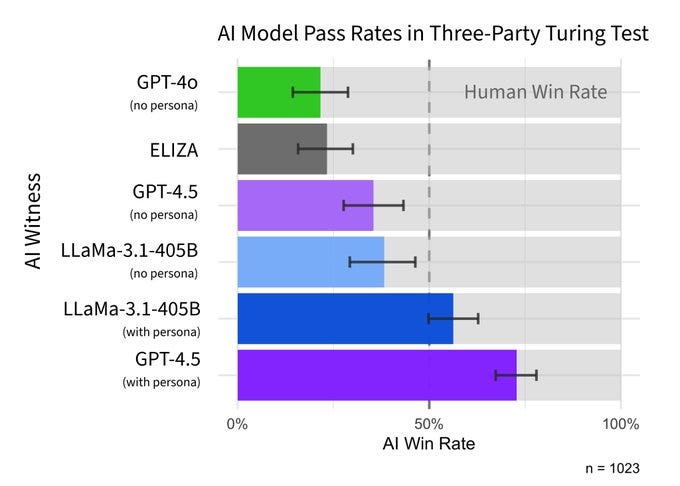AI models can now have human-like intelligence. Researchers from the University of California, San Diego, published a study on LLMs passing the Turing Test. They found “the first empirical evidence that any artificial system passes a standard three-party Turing test.”

What is the Turing Test?
The Turing Test is a test to know a machine’s ability to show human-like intelligence and behavior. It was first proposed by Alan Turing in 1950 in his paper “Computing Machinery and Intelligence.”
The Turing Test setup includes a human judge who interacts with both a human and an AI through text-based communication. The judge does not know which is a human or an AI. If the AI can convince the judge that it is a human — a real human then it is said to have passed the test.
The Turing Test is a benchmark for artificial intelligence for measuring a machine to behave like a real human being. It doesn’t mean it understands like a human but mimics a human-like response.
The Study
A new study from UC San Diego claims that GPT-4.5 was judged to be human 73% of the time when prompted to adopt a human-like intelligence — suggesting it passes the Turing Test.
They took 4 models — ELIZA, OpenAI’s GPT-4o & GPT-4.5, Meta’s LLaMa-3.1–405B — and put into the test. The participants had to have a 5-minute conversation with a human and an AI and judge them.

When prompted to adapt a human-like persona and behaviors, GPT-4.5 judged to be human 73% of time, LLaMa-3.1 at 56%, ELIZA at 23% and GPT-4o at 21%.
It is claimed that GPT-4.5 passes the Turing Test and is judged to be more human than most humans. What do you think of this?


